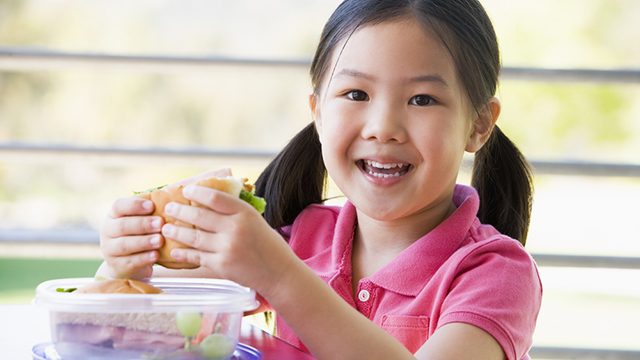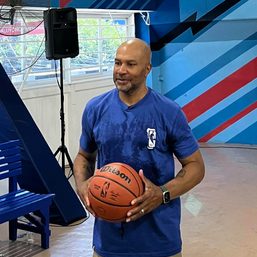SUMMARY
This is AI generated summarization, which may have errors. For context, always refer to the full article.

MANILA, Philippines – Children in schools have it tough nowadays and this can take toll on their health.
Aside from gruelling subjects that can tire the mind, schoolchildren actively take part in extra-curricular activities such as sports after class. They’re usually both physically and mentally exhausted after a day at school.
It’s very important for a child to be well fed while in school. Short-term hunger, according to the United Nations Children’s Fund (Unicef), can adversely affect his or her ability to learn. (READ: Learning on an empty stomach)
Meanwhile, micronutrient deficiency can hinder physical and cognitive development and lessen productivity. (READ: Hidden hunger)
This can easily be prevented if they are properly nourished. The right healthy food can eventually replenish the energy lost throughout the day.
At home, parents can easily track what their child is eating. The problem now lies when they are in school, where children spend more and more hours these days.
Better baon
Fortunately, parents can ensure that their children consume the right food by giving them packed lunches – or what’s called baon. (READ: How to: Build better lunchboxes)
Although usually home-cooked, these meals usually vary from rice meals to snacks bought from the neighborhood grocery store. But regardless of the type, these should be nutritious enough to energize a child during – and even after – school.
The Food and Nutrition Research Institute (FNRI) offers some tips to ensure that children’s baon will be healthy, nutritious, and wholesome:
1. Plan ahead
It’s best to think about a child’s packed lunch to school on a weekly basis. This advance period will allow a parent to explore more healthy options to choose from and not be pressured by lack of time.
If the child is older, he can be included in the decision-making process. This will develop a habit of making choices for themselves that are healthy and best.
2. Be diverse
Packed lunches should be diverse and each food group should be well represented. Through this, children can be energized enough for all activities in school because of the unique nutrients each food group offers.
Despite being applied only to Filipino adults, the FNRI’s Pinggang Pinoy prescription can serve as a template for what kinds and quantities of food can be given. The food guide’s servings should be tailored to what a child’s daily energy and protein intake requirements are.
3. Make it easy
Dishes for baon should be easy-to-pack and easy-to-carry like fried fish, chicken or pork, beef tapa, fish omelette, and vegetables.
This will lessen the complexity and make it easy for the child to eat the prepared lunch. A study by Cornell University’s Food and Brand Lab even concluded that making healthy food easy to access and eat makes it a more “viable” option for children. (READ: How to make your family and friends eat healthy)
4. Stay away from soda
Milk and fruit juices should be a priority in a child’s baon as beverage. Aside from costing less than carbonated drinks or sodas, these are more nutritious and even help fight diseases common among children.
Fruit juices contain specific vitamins that can strengthen the immune system. Meanwhile, milk, especially fresh mik, contains calcium that can help make bones stronger. This is needed for the extra physical activities a child often engages in.
Do not forget to include drinking water that’s safe, clean, and sufficient for the whole day to keep them rehydrated.
5. Keep it safe
Aside from being nutritious, food safety should be a priority when it comes to packing lunches for a child. (READ: ‘Food safety critical to PH future’)
The area where food is prepared should be clean and the person preparing it should observe proper hygiene. If compromised, the health of a child may be put at risk due to his or her vulnerability. (READ: Preventing food contamination: 5 ways to ensure food safety)
Be sure to use thermal or insulated lunch boxes to keep the right temperature of the food. Keep hot food hot and cold food cold to prevent them losing important nutrients.
Healthy 24/7
Keeping anyone well-nourished should not be limited to a specific time frame. One cannot expect to have the right nutrients when he or she is only consuming healthy food during lunch, dinner, or breakfast.
Healthy habits should be observed all throughout the day regardless of whether the child is in school, at home, or outside with friends.
The effects of keeping them healthy and well-nourished are not seen only during childhood – they can also be key to success in the future. – Rappler.com
Child eating packed lunch image from Shutterstock.
Be part of the conversation! You may also send your video materials, campaigns, and stories to move.ph@rappler.com. Be part of the #HungerProject.
Add a comment
How does this make you feel?





There are no comments yet. Add your comment to start the conversation.